Chapter 26_ Closed Chest Drainage Systems _ Nursing School Test Banks
Document Content and Description Below
Chapter 26: Closed Chest Drainage Systems MULTIPLE CHOICE 1. The nurse is caring for a patient who is comatose and on a ventilator. When she enters the room, she notices that the patient’s trache... a has shifted toward the left side of the patient’s neck, and he has become tachycardic. She assesses the patient’s blood pressure and notes that it is 84/38. The nurse calls for help, having recognized that the patient has developed which of the following conditions? a. Hemothorax b. Pneumothorax on the left side c. Pneumothorax on the right side d. Myocardial infarction ANS: C A tension pneumothorax occurs from rupture in the pleura when air accumulates in the pleural space more rapidly than it is removed. If left untreated, the lung on the affected side collapses, and the mediastinum and the trachea shift to the opposite (unaffected) side. The patient has sudden chest pain, a fall in blood pressure, and tachycardia, and cardiopulmonary arrest can occur. Patients with chest trauma, fractured ribs, and invasive thoracic bedside procedures (such as insertion of central lines) and those on highpressure mechanical ventilation are at risk for tension pneumothorax. A hemothorax is a collapse of the lung caused by an accumulation of blood and fluid in the pleural cavity between the chest wall and the lung, usually as a result of trauma. Nothing in this scenario would suggest myocardial infarction. Students Chat Room 15 2/20/2017 Chapter 26: Closed Chest Drainage Systems | Nursing School Test Banks https://nursingtestbank.info/chapter26closedchestdrainagesystems/ 2/24 DIF: Cognitive Level: Synthesis REF: Text reference: p. 656 OBJ: List three conditions requiring chest tube insertion. TOP: Pneumothorax KEY: Nursing Process Step: Assessment MSC: NCLEX: Physiological Integrity 2. For a patient with a pneumothorax, where does the nurse anticipate that the chest tube will be located? a. Second to third intercostal space (apical), anterior b. Fifth to sixth intercostal space, posterior c. Fifth to sixth intercostal space, lateral d. Mediastinal area ANS: A Apical (second or third intercostal space) and anterior chest tube placement promotes removal of air, which is necessary in the case of a pneumothorax. Chest tubes are placed low (usually in the fifth or sixth intercostal space) and posterior or lateral to drain fluid. A mediastinal chest tube is placed in the mediastinum, just below the sternum. This tube drains blood or fluid, preventing its accumulation around the heart. A mediastinal tube commonly is used after open heart surgery. DIF: Cognitive Level: Analysis REF: Text reference: p. 656 OBJ: List three common sites for chest tube placement. TOP: Chest Tube Position KEY: Nursing Process Step: Assessment MSC: NCLEX: Physiological Integrity 3. The patient’s chest tube is attached to a oneway flutter valve that allows air to escape the chest cavity and prevents air from reentering. How does the nurse document this finding? a. Heimlich chest drain valve Students Chat Room 15 2/20/2017 Chapter 26: Closed Chest Drainage Systems | Nursing School Test Banks https://nursingtestbank.info/chapter26closedchestdrainagesystems/ 3/24 b. Pneumovax c. Water seal d. Pleurovac ANS: A The device described is a Heimlich chest drain valve. Pneumovax is a pneumococcal vaccine that is effective against 23 common strains of Pneumococcus. A Pleurovac is the brand name of a waterseal set. DIF: Cognitive Level: Knowledge REF: Text reference: p. 657 OBJ: Define the key terms used in the care of patients with chest tubes. TOP: Type of Chest Tube KEY: Nursing Process Step: Assessment MSC: NCLEX: Physiological Integrity 4. The nurse is caring for a patient who has a chest tube connected to a water seal. The patient is not on a ventilator. Which of the following would the nurse consider normal? a. The fluid level in the water seal rises with inspiration. b. The fluid level in the water seal falls with inspiration. c. Constant bubbling occurs in the water seal. d. The fluid level in the water seal falls with expiration 3 days after insertion. ANS: A Students Chat Room 15 2/20/2017 Chapter 26: Closed Chest Drainage Systems | Nursing School Test Banks https://nursingtestbank.info/chapter26closedchestdrainagesystems/ 4/24 Observe the water seal for intermittent bubbling from its U tube or for a rise and fall of fluid that is synchronous with respirations. (For example, in a nonmechanically ventilated patient, the fluid rises during inspiration, and the fluid level falls during expiration. When a patient is on a mechanical ventilator, the opposite occurs.) In a nonmechanically ventilated patient, the fluid rises during inspiration, and the fluid level falls during expiration. Constant bubbling in the water seal or a sudden, unexpected stoppage of waterseal activity is considered abnormal and requires immediate attention. After 2 to 3 days, tidaling or bubbling on expiration is expected to stop, indicating that the lung has reexpanded [Show More]
Last updated: 1 year ago
Preview 1 out of 24 pages
Instant download
.png)
Buy this document to get the full access instantly
Instant Download Access after purchase
Add to cartInstant download
Reviews( 0 )
Document information
Connected school, study & course
About the document
Uploaded On
Sep 09, 2021
Number of pages
24
Written in
Additional information
This document has been written for:
Uploaded
Sep 09, 2021
Downloads
0
Views
91

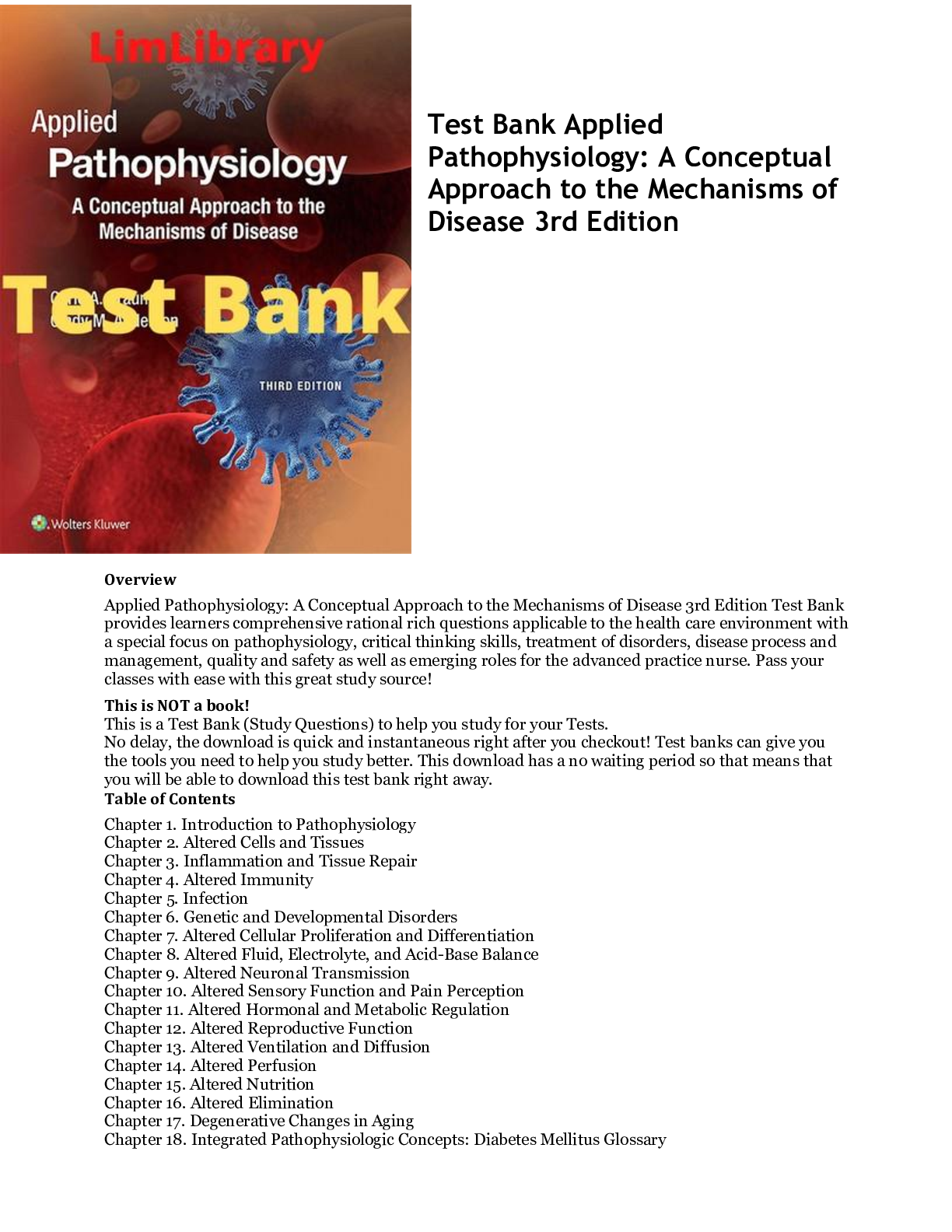

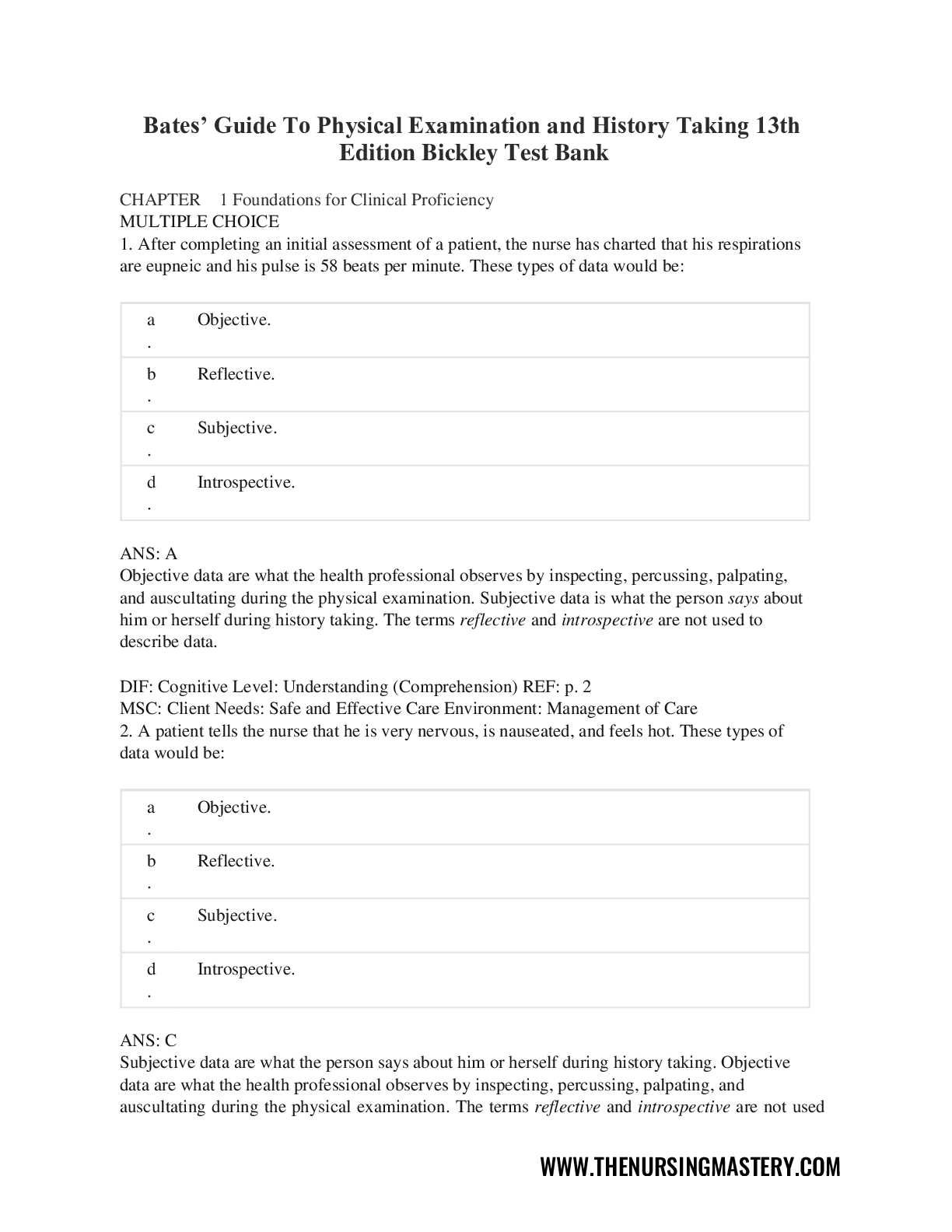
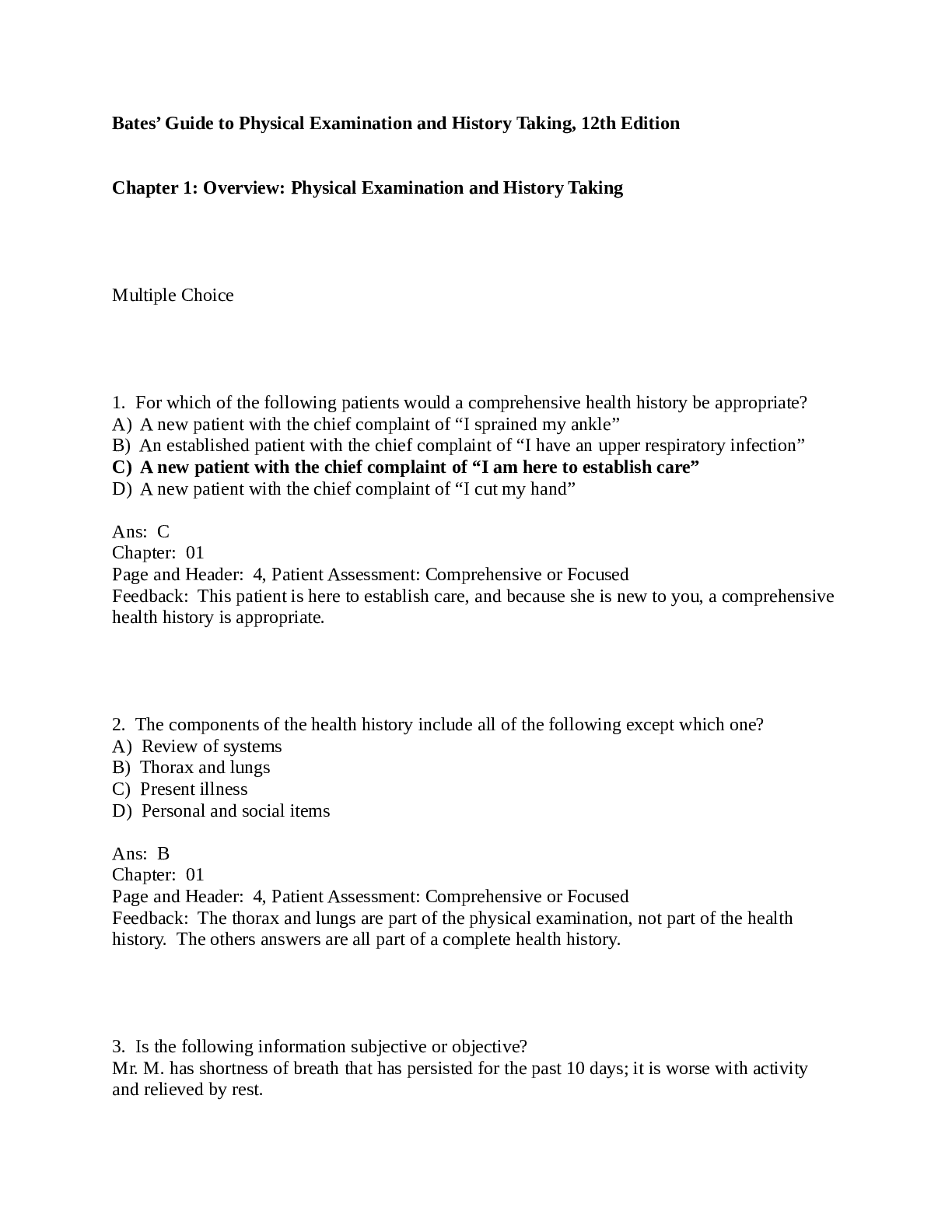
.png)
.png)
.png)

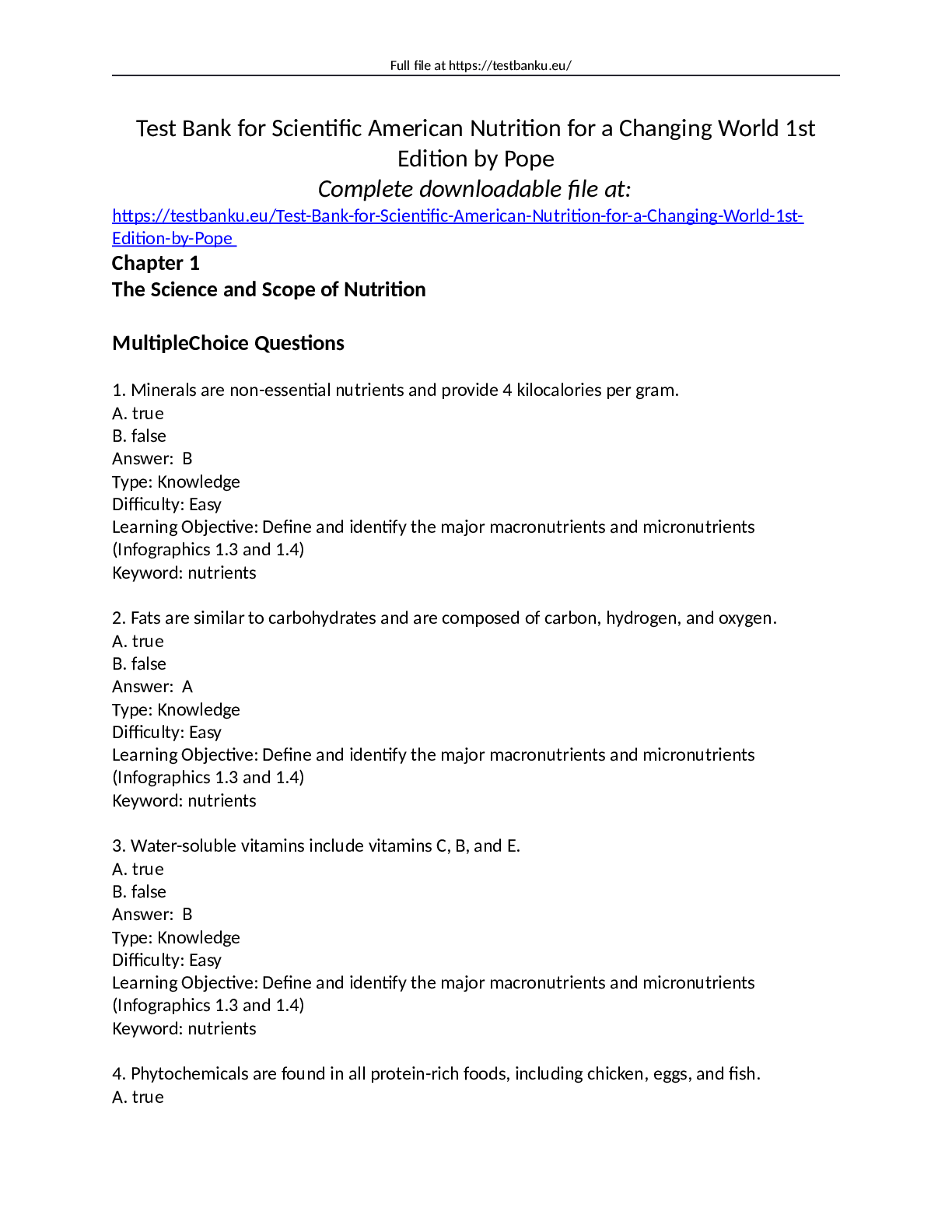
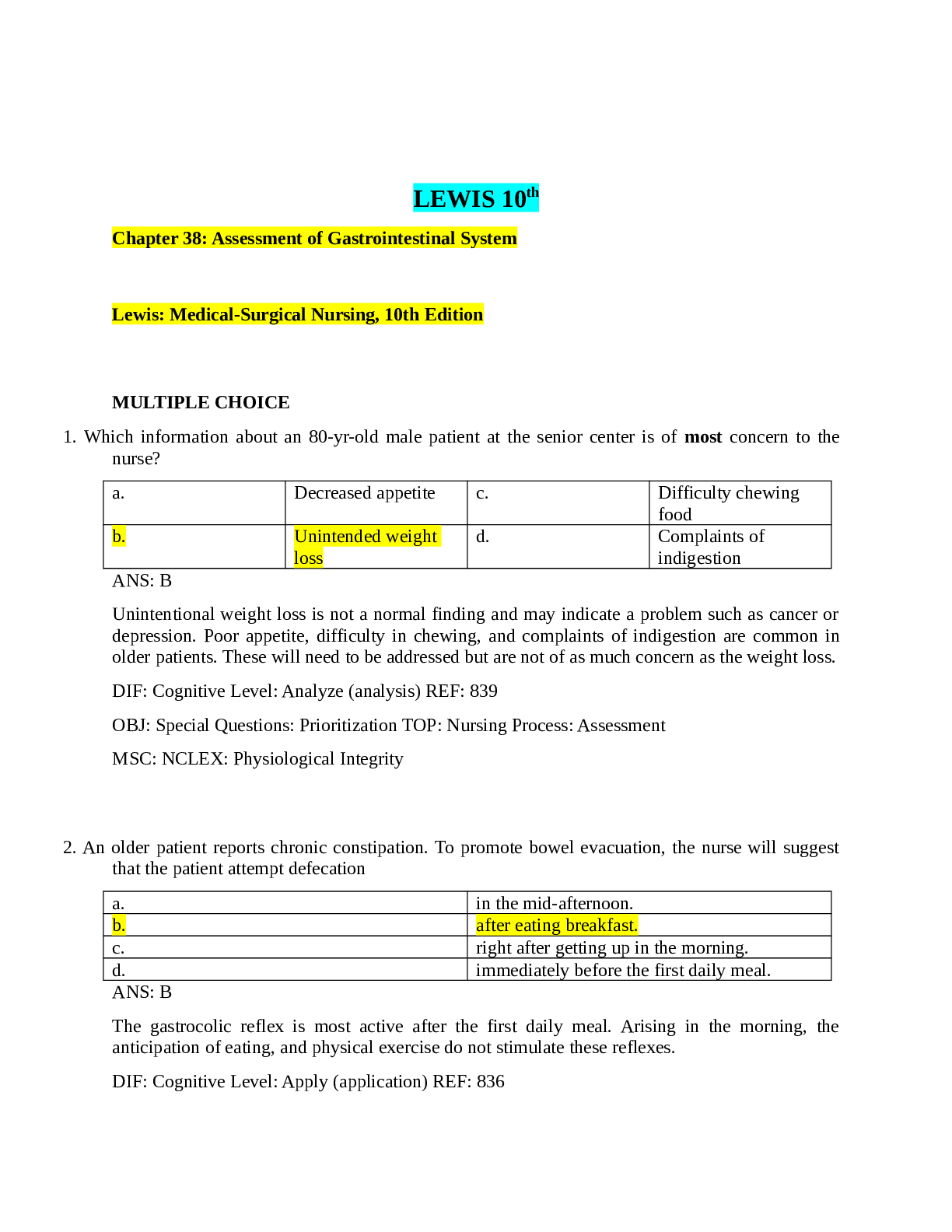



.png)
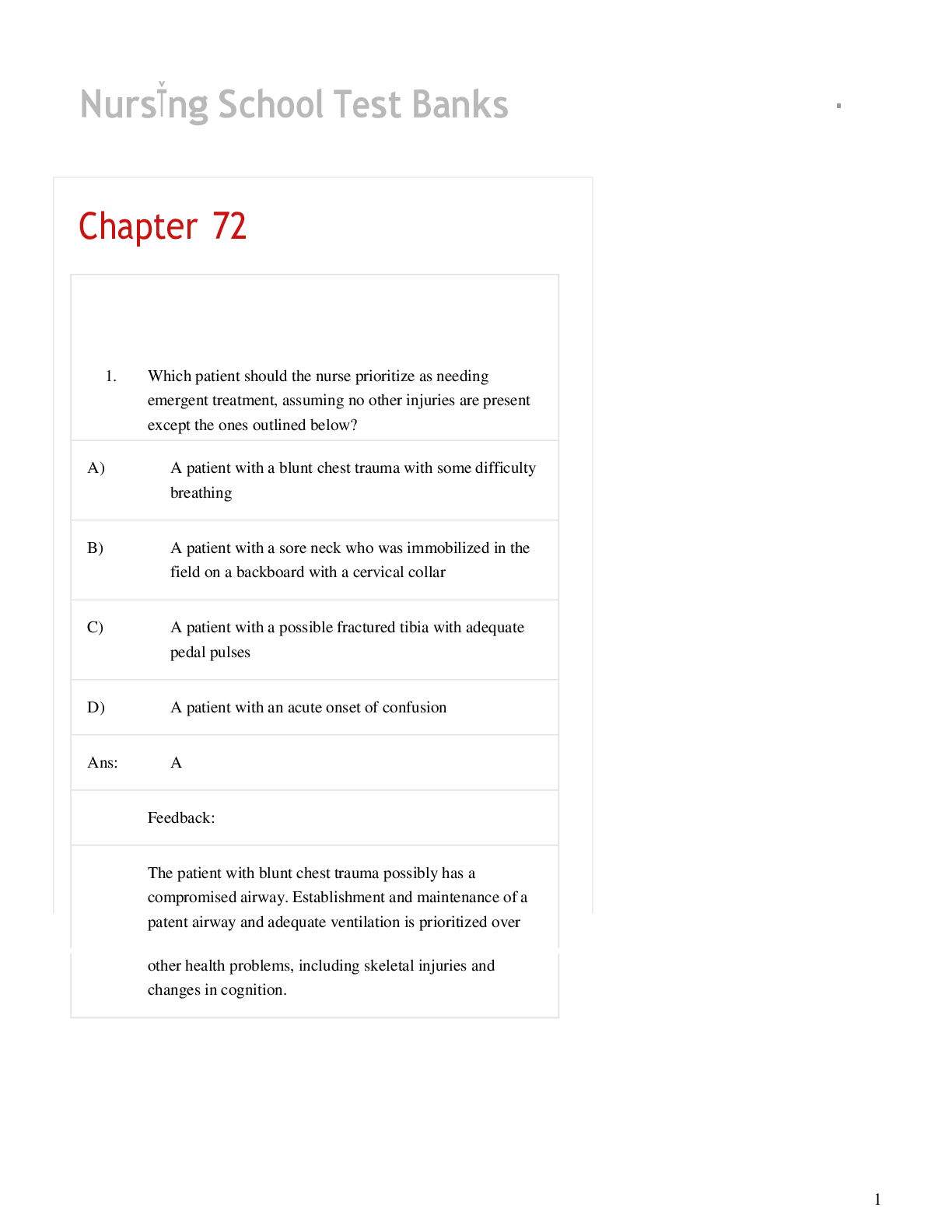
.png)

.png)
.png)
.png)
.png)
.png)

